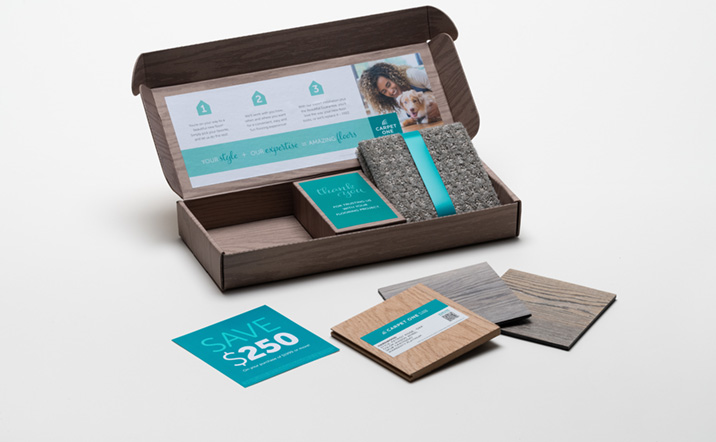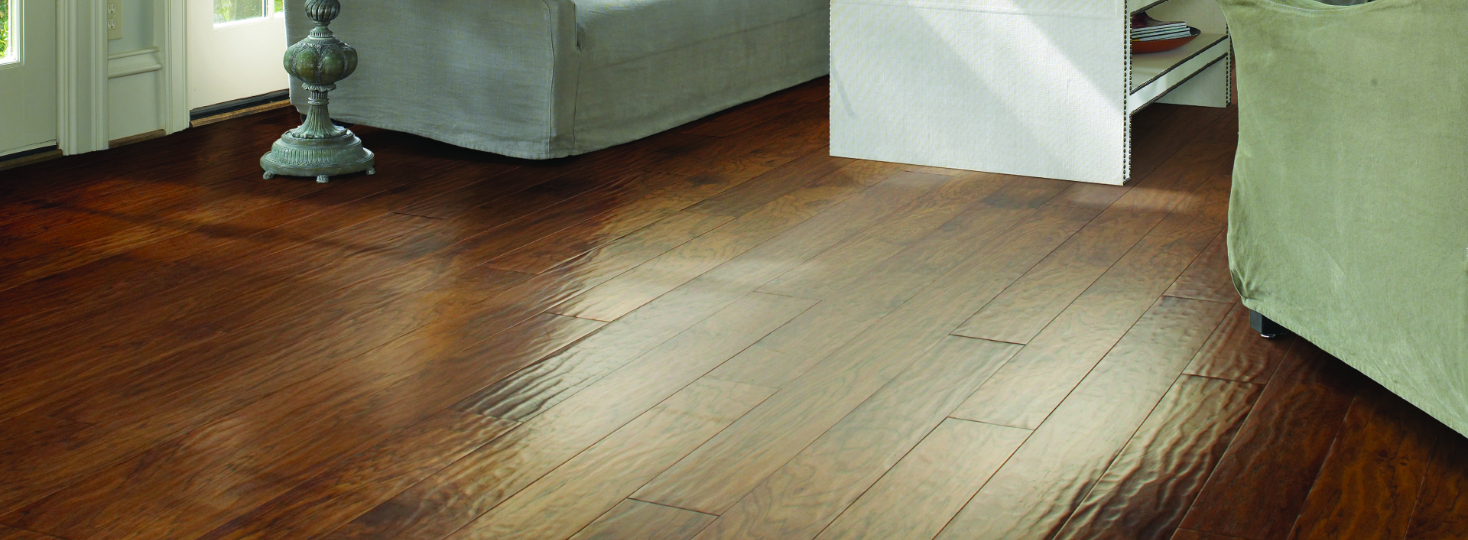
Eco-Friendly Wood Flooring
Eco-friendly wood flooring is hardwood originating from forests managed and protected to prevent deforestation and promote regrowth.

Eco-friendly wood flooring is hardwood originating from forests managed and protected to prevent deforestation and promote regrowth.
No items could be found with the selected filters.
Please try your search again.

Our designers share tips and top trends for every season. Discover your next home project with the help of our blog.

Get up to six samples delivered to your door.

We know it's more important than ever before to maintain a smaller footprint on the environment. This means making more thoughtful decisions about what building materials to use, including sustainable and eco-friendly flooring options.
Choosing eco-friendly and sustainable flooring takes into account the product itself, along with how it's sourced and manufactured, what other materials and resources are used, and the supply chain's impact on the environment. Thankfully, there are many eco-friendly wood flooring options available that can deliver the look and feel you want without harming the environment.
Eco-friendly wood flooring is any kind of hardwood flooring originating from forests that are managed and protected to prevent deforestation and promote regrowth.
One of the best ways to identify authentic eco-friendly wood floors is to look for the US Forest Stewardship Council (FSC) stamp of approval. This nonprofit's logo indicates that the sustainable flooring has met criteria based on several principles of forest stewardship. These range from enhancing the quality of life of local communities to protecting local wildlife.
When shopping for hardwood, any product that proudly showcases the FSC certification logo is a sustainable flooring option worth considering. You can find green versions of many hardwood species, including favorites like oak, birch, walnut, and ash. Eco-friendly wood floors make for durable, long-lasting surfaces that are environmentally responsible and ethically made.
Bamboo boasts similar properties to hardwood, but instead of wood, it’s a hardy wood-like grass. Since bamboo grows back much faster than hardwood, it’s more regenerable.If you're shopping for an eco-friendly bamboo flooring to complement your design aesthetic, look for the FSC certified logo. Non-certified options involve negative ecological factors, like using toxic adhesives or being harvested from non-sustainable sources.
Cork is another eco-friendly wood flooring option, but unlike hardwood floors, it's made from bark. Cork oak tree bark grows back within 3 years, which is significantly faster than standard wood flooring. Its dense, spongy surface also comes in handy in busy rooms like kitchens where people can more comfortably stand.
Don’t worry, shopping green doesn’t have to be hard!
The strength of eco-friendly wood flooring depends on the type of hardwood you've chosen. Hickory, maple, white oak, and ash are among the most durable. They age gracefully and hold up to decades of wear from generations of little ones running around.
Eco-friendly bamboo flooring is incredibly resilient and versatile, easily withstanding constant foot traffic in bustling homes and commercial spaces. Bamboo is denser than some hardwoods, including maple and oak. It's also tough to scratch, which is good news for pet owners.
Dense, spongy cork flooring is a softer eco-friendly flooring option that naturally absorbs noise. Unfortunately, it can fade in direct UV light and react to high humidity by expanding and contracting.
The good news is that these sustainable flooring options are all easy to clean! Just regularly sweep or vacuum them to remove dirt and debris that can otherwise wear on your floors.
The average lifespan for well-maintained eco-friendly wood flooring varies widely. It also depends on several factors, including how it's installed, maintained, and worn. Under the best conditions, hardwood floors can last 75 to 100 years, while bamboo flooring may make it 10 to 25 years. Cork flooring is in the middle with an average life expectancy of 40 years or more.
Whichever option you choose, look into warranty protection like Carpet One Floor & Home offers. You'll rest easy knowing your new investment is protected and beautiful for years to come.
The installation of eco-friendly wood flooring is best left to a skilled professional who will ensure it's done properly. Hardwood and bamboo flooring have similar installation options: nail-down, glue-down, or floating. The best method for your eco-friendly wood floors will depend on the species you select and your subflooring.
Cork tiles are generally glued to the subfloor, which must be completely smooth to avoid bumps and indentations showing through the tiles. After being glued down, the surface is sanded for an even tile height and sealed with a protective finish.
Aside from the obvious advantage of being better for the environment, each of the sustainable flooring options mentioned have stand-out pros and cons to consider.
Bamboo is the most environmentally friendly because it's quick to regrow and is as durable as hardwood. However, bamboo is a wood-like grass and not, in fact, wood. If you're specifically looking for the authenticity of hardwood, consider an FSC-certified white ash or oak, which meets the standards for sustainability and offers a lot of durability.
Hardwood floors are considered eco-friendly if they meet specific standards set by the US Forest Stewardship Council (FSC). You can identify truly sustainable wood flooring by looking for the FSC certification logo.